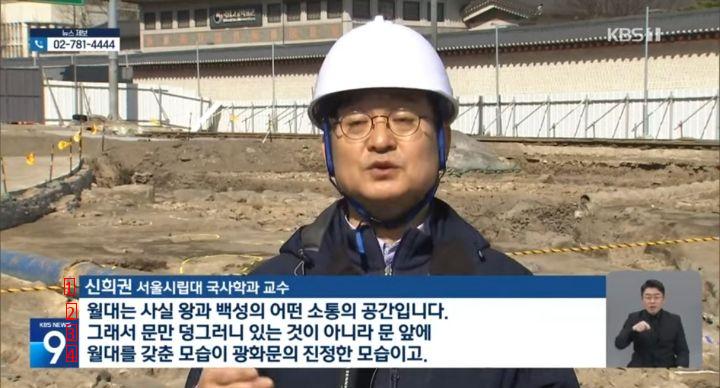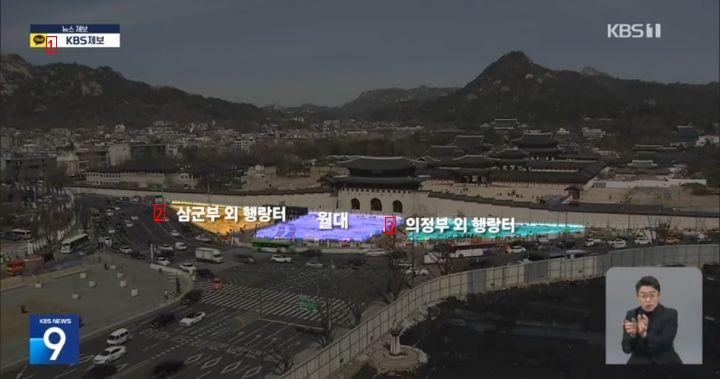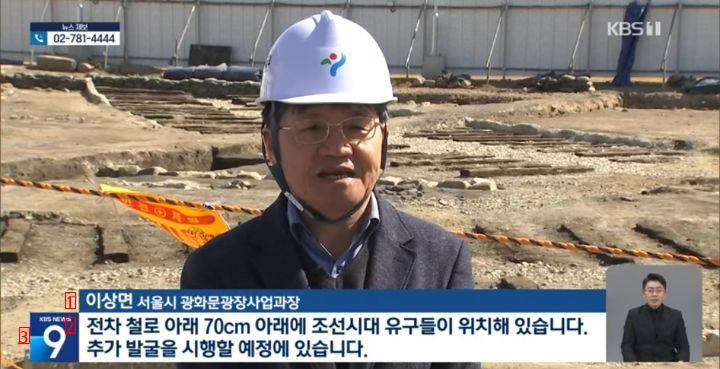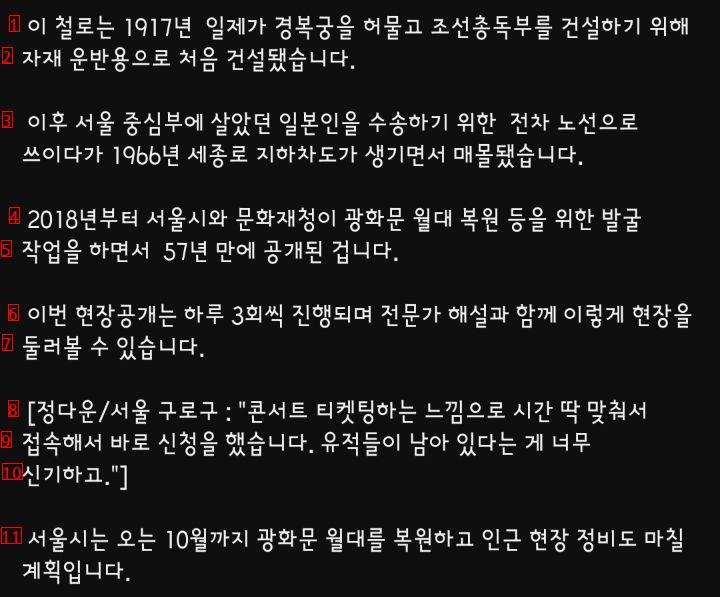Japanese railroad that trampled down the royal palace symbol revealed to citizens for the first time in 57 years.

image text translation
(1)In front of Gwanghwamun Gate, the main gate of Gyeongbokgung Palace, the palace of Joseon
(2)It is a large platform installed in front of Gwanghwamun, or Woldae, and there is an old railroad.

image text translation
(1)The railroad extending from Anguk-dong in the east of Gwanghwamun and Hyoja-dong in the west is Y-shaped.
(2)It will meet and lead to Sejong-ro.
(3)It is not only the site of Woldae, where the main events of the palace were held, but also the symbol of Joseon on the passage of the king.
(1)Shin Hee-kwon, a professor of Korean history at Seoul National University
image text translation
(2)Wondae is actually a place for communication between the king and the people.
(3)It’s not just the door, but in front of the door.
(4)The view of Gwanghwamun is the true view of Gwanghwamun.
(1)KBS newsletter
image text translation
(2)a third-division retreat
(3)Uijeongbu foreign hangout site
(1)Next to the railroad, the three military departments and the highest administrative organization in charge of the military service of Joseon,
image text translation
(2)We’ve also identified a place that is believed to be a hangout site in Uijeongbu.
(1)Lee Sang-myeon, head of the Gwanghwamun Square Project Division in Seoul.
image text translation
(2)The remains of the Joseon Dynasty are located 70cm below the tramway.
(3)9 additional excavations are planned to be carried out.

image text translation
(1)This railroad was constructed by the Japanese in 1917 to demolish Gyeongbokgung Palace and build the Joseon Governor-General’s Office.
(2)First built for transporting materials.
(3)It was later used as a tram route to transport Japanese who lived in central Seoul, but was buried in 1966 when an underground road on Sejong-ro was built.
(4)The Seoul Metropolitan Government and the Cultural Heritage Administration have been excavating for the restoration of Gwanghwamun Woldae since 2018.
(5)It was released after 57 years.
(6)This on-site release is held three times a day, and with expert commentary.
(7)You can look around.
(8)Just in time, as if you’re ticketing for a concert in Guro-gu, Seoul.
(9)I logged in and applied right away. The fact that there are remains…
(10)It’s fascinating.
(11)The Seoul Metropolitan Government plans to restore Gwanghwamun Woldae by October and complete the maintenance of nearby sites.